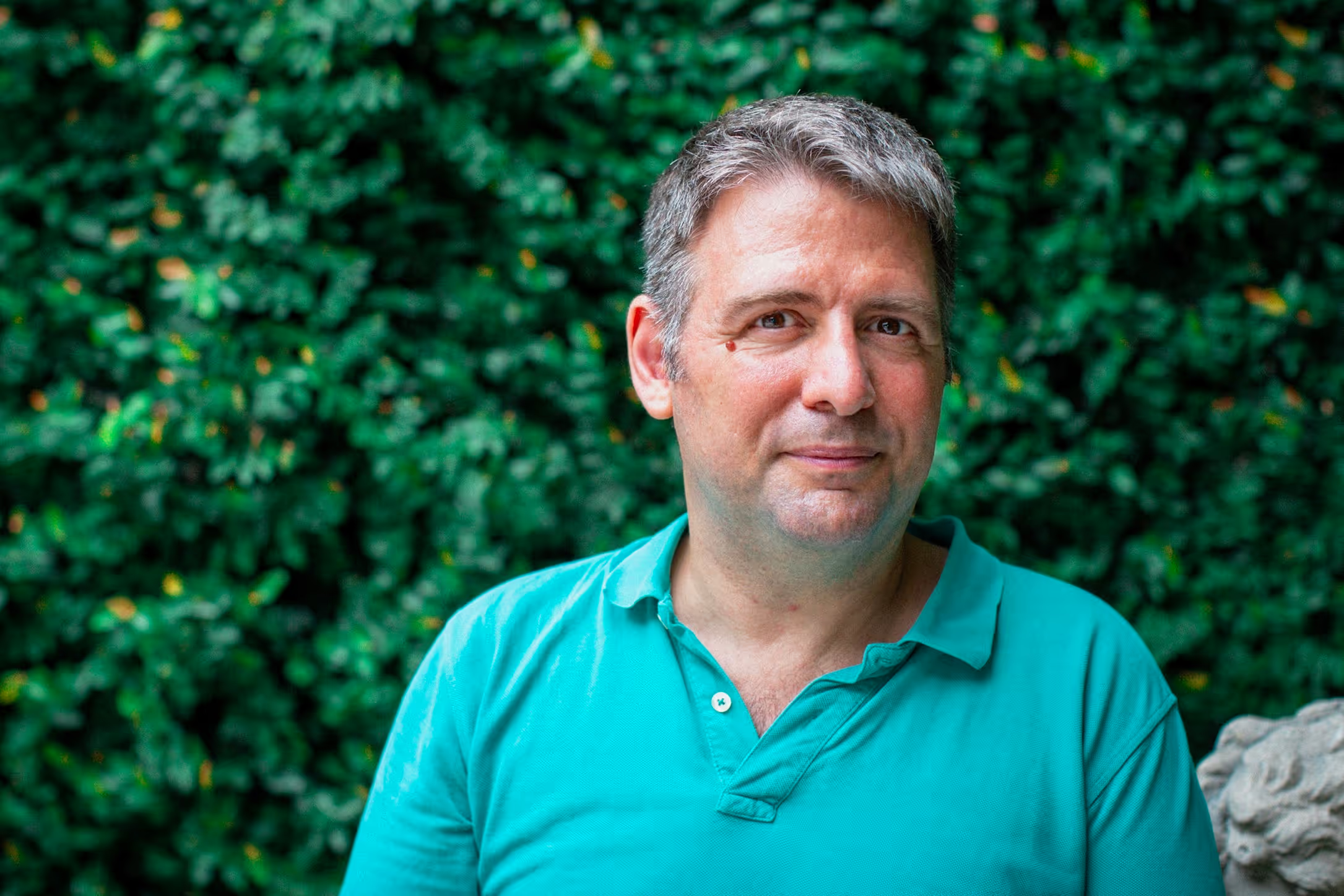
How World-Class Conducting Exposes What Most Leaders Miss (And How to Fix It)
Discover how conductors sense subtle cues before failure and how executive leaders can train this to act early and lead with foresight.
Several years ago, I faced Beethoven’s Triple Concerto for the first time as a conductor. It’s a formidable work: three soloists in the foreground, a full orchestra behind, demanding precision and balance with little margin for error. An intensity that leaves no room for complacency.
I recall a particular moment with the horn section. They had an entrance, not a huge solo, but exposed enough that any mistake would be noticed immediately. During rehearsal, I noticed their tension. Their eyes were fixed on the score and on me, preparing for the entrance. They weren’t their usual confident selves, so I gave them an extra-clear cue and they played perfectly. I picked up on it because a part of my job as a conductor is to be attuned to such fine details. I now call it the Hidden Pulse: the ability to detect subtle signals, unspoken hesitations, physical cues, or slight misalignments, that foretell potential breakdowns.
But I messed up. My focus was consumed by the pianist playing a challenging passage, and I neglected to give the horns the clear cue I gave them before. I assumed they’d manage, as the experienced high-performers they were. In hindsight, that was a miscalculation, a failure to act on the signals I’d observed.
In hindsight, that was a miscalculation, a failure to act on the signals I’d observed.
When the concert arrived, that moment came, and the horns missed their entrance. A few seconds of unimaginable stress on stage, in front of thousands of people, followed by a quick recovery. The audience likely dismissed it as a minor slip, but I knew better, it was my oversight. I’d seen the warning signs and failed to intervene.
That experience shaped my understanding of leadership. The Hidden Pulse, sensing those micro-signals, like a musician’s tension or a team member’s hesitation, is a critical yet underutilized skill for senior leaders. Research, such as studies in Nature and Harvard Business Review on team dynamics, confirms that subtle cues like body language, facial expressions and vocal tone shifts predict team failures more reliably than traditional metrics like KPIs.
Research [...] on team dynamics, confirms that subtle cues like body language, facial expressions and vocal tone shifts predict team failures more reliably than traditional metrics like KPIs.
In conducting, missing these signals risks the performance’s collapse; in leadership, it can lead to missed deadlines, disengaged teams, or derailed projects. My mistake that night taught me that true leadership hinges on this vigilance: reading the room, catching the faint warnings, and acting before issues escalate. For high performers across sectors, mastering the Hidden Pulse means not just focusing on the loudest voices or most visible data, but sensing the quiet signals that others overlook. Fail to do so, and you risk not just a misstep, but the entire performance in shambles.
True leadership hinges on this vigilance: reading the room, catching the faint warnings, and acting before issues escalate.
The Science Behind the Subtle Signals
On the podium, I’m constantly scanning for a string section’s hesitance or a trombonist’s lack of eye contact, cues that signal trouble before a note is played. Recent research backs this instinct, showing how these subtle signals predict team outcomes and how leaders can train to catch them. In 2025, a Scientific Reports pilot study trained 28 participants over three weeks and found they became more accurate at recognizing fleeting facial cues, including some improvements in low mood. A 2023 Acta Psychologica study found that micro-expression recognition correlates with emotional intelligence but also appears to include a distinct component, suggesting it can be developed separately, helping leaders pick up on a coder’s hesitation or a nurse’s stress without relying on intuition alone.
Research from PubMed Central on “charismatic nonverbal displays” found that leaders who blend openness, like steady eye contact, with confidence, like a relaxed posture, build trust subconsciously, but mismatched cues, like a tense smile with calm words, erode alignment. A 2025 arXiv preprint on pediatric ICU team training used egocentric video, gaze, and speech patterns to show that small behavioral signals predicted how teams rated leadership effectiveness. These studies confirm what I regularly see on stage: subtle cues aren’t just noise; they predict breakdowns, and training makes you sharper at catching them. They also warn that misaligned verbal and nonverbal signals can sow confusion long before anyone spots the damage.
These studies confirm what I regularly see on stage: subtle cues aren’t just noise; they predict breakdowns, and training makes you sharper at catching them. They also warn that misaligned verbal and nonverbal signals can sow confusion long before anyone spots the damage.
What Makes Hidden Pulse Detection Hard, And What Makes It Worse
Missing the horn section’s tension in Beethoven’s Triple Concerto taught me how easy it is to overlook the Hidden Pulse, and for CEOs, the stakes are even higher. In big organizations, signals from the ground, like a coder’s hesitant glance or a teacher’s tense tone, get muffled through layers of managers, cultural differences, and remote work setups, making it hard to sense what’s really going on. These cues are tricky to interpret: a silence after a strategy pitch could mean disagreement, confusion, or just boredom, and jumping to the wrong conclusion can spark anxiety or stifle honest interaction. Cultural and gender biases make it worse. Mental overload doesn’t help; leaders buried in data and meetings focus on what’s loud or measurable, missing the signals that matter most. Worst of all, most companies reward big wins and overlook the importance of catching early misalignments. In conducting, missing those cues leads directly to failure; in business, it risks missed deadlines, disengaged teams, or failed projects.
In big organizations, signals from the ground, like a coder’s hesitant glance or a teacher’s tense tone, get muffled through layers of managers, cultural differences, and remote work setups, making it hard to sense what’s really going on.
Catching the Hidden Pulse: Stage-Tested Practices to Sharpen Leadership Instincts
I’ve developed a series of ‘pulse-sensing exercises’ drawn from my orchestral conducting and leadership training experience. They’re rigorous, pushing leaders to hone acute awareness, and transform how they detect subtle misalignments, as shown in studies on perception thresholds, like those in Nature.
A. Micro-Expression & Recognition Training
Use tools like METV (Micro Expression Training Tool) daily or weekly. The 2025 pilot study shows that regularly training even 20-30 minutes over weeks improves recognition accuracy.
Do it in groups. Share video clips, replay leadership meetings, spot micro-expressions, discuss what they could mean. Gradually build your “library” of what subtle hesitation, rapid blink, slight shoulder raise really mean in your organization.
B. Multimodal Signal Tracking in Real-Time
Don’t trust just one channel. In the PICU study, eye contact, head movement, and speaking patterns all aligned as signals.
Similarly, in orchestra mode, I monitor: eye contact, posture, breathing, how people watch me and each other. In corporate settings, train yourself to watch: tone variation, pauses, body alignment, gaze (even over video), facial micro-expressions, small gestures of disengagement. If possible, record meetings to review.
C. Calibration & Feedback Loops
After you act on a signal, check if your assessment was correct. Ask yourself: is my interpretation valid? What caused me to sense something? On the podium I receive immediate feedback from my players, telling me when my gesture was confusing, over-correcting or not grounded enough to follow.
In organizations, build safe spaces for managers who note subtle signals to bring them up without repercussion. Use 360° feedback not just on what people said, but what signals people read.
D. Turning Peripheral Sensing into Proactive Intervention
Once you detect a signal, what do you do? In conducting, it might be a gesture, a pause, a verbal insertion. In business:
- Ask clarifying questions privately. For example, “I noticed you looked unsure when we discussed X, what’s on your mind?”
- Slow things down. If you detect misalignment, don’t plow ahead; schedule time to explore, reframe, test assumptions.
- Use symbolic safety: acknowledge uncertainty, allow dissent, model vulnerability. Subtle signals often reflect fear of speaking up; lowering that threshold matters.
The Hidden Pulse Under Scrutiny: Stage-Inspired Leadership Meets Emerging Science
I must be critical: much of what I propose draws on analogy (my personal orchestral experience) and early-stage empirical work. The pilot studies are small; many do not generalize to large, multicultural, remote or hybrid organizations. Here are gaps and risks. The micro-expression training study, though strong, had only 28 participants and limited controls. We need randomized trials in corporate settings (not just labs) to test transfer of skill to real-world decision-moments.
Recognition ≠ interpretation. Seeing a micro-expression doesn’t tell you what it means. Leaders risk projection or confirmation bias unless they check their interpretation. Cultural and gender biases in signal detection are still under-studied. Research suggests people misread “hesitation” differently when it comes from women or minority individuals. Remote and hybrid work complicate it even more: video flattens many cues, delays distort alignment, and fatigue reduces resolution.
Recognition ≠ interpretation. Seeing a micro-expression doesn’t tell you what it means. Leaders risk projection or confirmation bias unless they check their interpretation.
We have less rigorous research on signaling in virtual environments, though some studies are emerging. Research from MIT’s Human Dynamics Lab (Pentland, 2012) shows leaders can train to spot subtle interaction patterns, driving meaningful results. Yet we must be cautious. Denault and colleagues (2024) demonstrate that many body-language training programs oversell their accuracy. Subtle signals should be treated as hypotheses to test, not hard facts. Most existing studies are small and early-stage, with gaps in multicultural or remote contexts. Companies like Google already bet on this kind of training, but it’s not a slam dunk. You’ll need to test it, measure it, and see it work, like I did in the story below.
Many body-language training programs oversell their accuracy. Subtle signals should be treated as hypotheses to test, not hard facts.
Harnessing the Hidden Pulse: Steering a Stressed Orchestra to Triumph
A few years ago, I led a world premiere with a 100-musician orchestra. The score was incredibly complex and we just didn’t have enough time to absorb everything. The rehearsals were short and the musicians were really frustrated, justifiably so. Grumbled remarks, tense glances. I had learned not to only to watch for these signals, this Hidden Pulse, but to act on them.
During the rehearsals, I could see the orchestra struggling, especially the soloists, which had astoundingly complicated parts. They were beginning to lose their confidence that we would actually make it. I stopped conducting and spoke straight to them: “I know it’s not enough time, I know the music isn’t approachable, you’re right.” I kept my voice calm and direct and my facial expressions compassionate and positive, even though I was a wreck myself. I forced myself to be in a 100%-focus zone and suppport each and every soloist with my gestures, and then moved on to the transitions and tutti parts, where all 100 musicians come together.
The premiere was tight and not without its challenges, but praised for its unity. Focusing on the musicans’ signals marked the difference between failure and success, not only because I was able to pinpoint what they were struggling with, but I could better understand what they needed from me as their leader, and which of my actions actually helped.
Focusing on the musicans’ signals marked the difference between failure and success, not only because I was able to pinpoint what they were struggling with, but I could better understand what they needed from me as their leader.
What Executive Leaders Should Do
Drawing from over 20 years of conducting, I’ve developed clear steps to bring the Hidden Pulse to your organization, backed by Harvard Business Review research on team dynamics. Start with a 30-day pilot for your top 10 leaders, having them observe one meeting weekly for nonverbal cues: tense postures, hesitant tones, averted gazes, and log impacts like catching early conflicts or making better decisions, as Nature (2018) shows micro-cue training boosts perception by 20%.
Restructure incentives to praise leaders who flag subtle issues, using anonymous pulse reports to make warnings visible. Create direct pipelines, like weekly check-ins or digital tools, to capture frontline signals from remote or diverse teams, countering distortion in large firms. When you spot a cue, act fast with a targeted move: a question, a pause. Act quick, adjust as needed, and don’t wait for perfect data. Consider investing in six months of monthly 30-minute micro-expression and cue training for execs and mid-managers using tools like METV, rewiring how you read stress in a manager’s pause or a director’s glance, with HBR (2020) linking this to 25% higher team productivity.
Restructure incentives to praise leaders who flag subtle issues, using anonymous pulse reports to make warnings visible.
Leading Before the Cracks Appear
Leaders constantly talk about resilience, alignment, and culture. But most of that language is about repair after cracks widen. What conducting teaches is this: by the time cracks are wide enough to analyze, the loss has already accrued—momentum, trust, emotional energy. The Hidden Pulse lets you catch those cracks early.
Yes, this demands humility, fatigue tolerance, and willingness to be wrong. But the cost of being wrong about a faint signal is almost always lower than the cost of being late.
If your ambition is to lead proactively, sustaining performance, preventing collapse, and guiding with foresight rather than reacting to crises, mastering the Hidden Pulse is your strategic edge.
The cost of being wrong about a faint signal is almost always lower than the cost of being late.
References
- Chamorro-Premuzic, Tomas, and Michael Sanger. What Most Makes HR a Science? People & Strategy, 2016.
- Denault, Vincent, Mark L. Patterson, Marius Zloteanu, and Victoria Talwar. The Myth of Body Language and the Fallacies of Body Language Analysis and Training Programs. In: Chadee, D., & Kostić, A. (eds.), Body Language Communication. Palgrave Macmillan, 2024.
- Hurley, C. M. Do You See What I See? Learning to Detect Micro Expressions of Emotion. Motivation and Emotion, 2012.
- Keating, Caroline F., Francis Adjei Boateng, Holly Loiacono, William Sherwood, Kathy Atwater, and Jennifer Hutchison. Charismatic Nonverbal Displays by Leaders Signal Receptivity and Formidability, and Tap Approach and Avoidance Motivational Systems. Frontiers in Psychology, 2020.
- Matsumoto, David, and Hyi Sung Hwang. Evidence for Training the Ability to Read Microexpressions of Emotion.Motivation and Emotion, 2011.
- Ouyang, Liangyang, Yuki Sakai, Ryosuke Furuta, Hisataka Nozawa, Hikoro Matsui, and Yoichi Sato. Leadership Assessment in Pediatric Intensive Care Unit Team Training. arXiv preprint, 2025.
- Pentland, Alex. The New Science of Building Great Teams. Harvard Business Review, 2012.
- Wezowski, Kasia, and Ian S. Penton-Voak. Associations Between Workplace Emotional Intelligence and Micro Expression Recognition. Acta Psychologica, 2023.
- Wezowski, Kasia, and Ian S. Penton-Voak. An Open Label Pilot Study of Micro Expression Recognition Training as an Intervention for Low Mood. Scientific Reports, 2025.
.svg)








